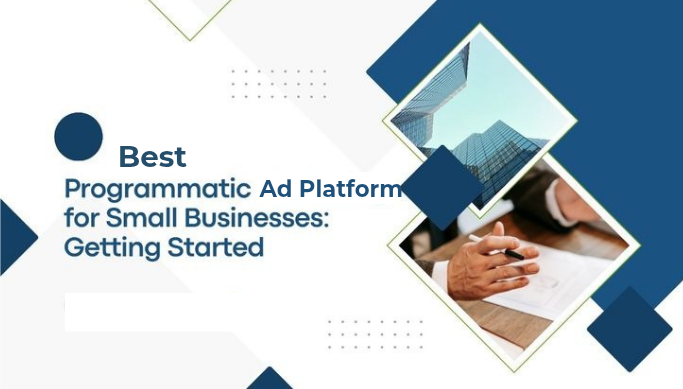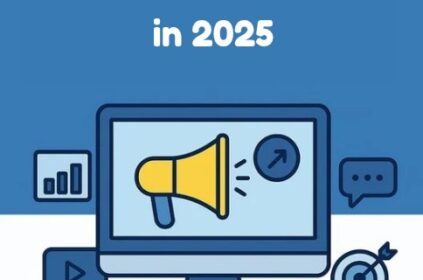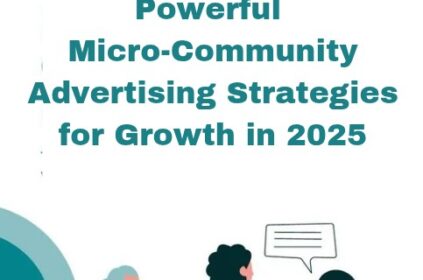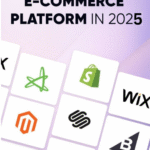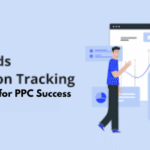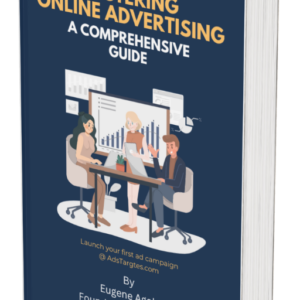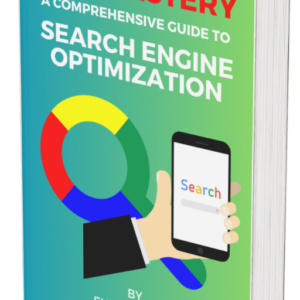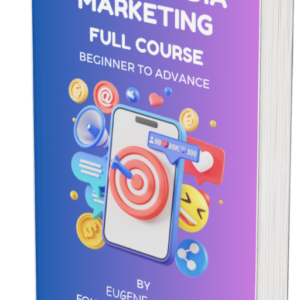Digital advertising budgets are set to brush the $992 billion mark in 2025, with nearly nine-in-ten display dollars transacted programmatically.
For neighborhood retailers and SaaS start-ups alike, the playing field has never been more algorithmic—or more competitive.
Choosing from the best programmatic ad platforms for small businesses in 2025 therefore moves well beyond a tactical checkbox; it dictates cost efficiency, data ownership, and long-term growth capacity.
Because small teams juggle limited head-count, the wrong platform can bury a healthy product behind spiraling CPMs, while the right one can lock in predictable customer acquisition cost (CAC) at scale.
Here, we rank nine high-impact options, unpack the trends shaping the market, and outline integration tactics so that founders, marketers, and agency partners can apply each recommendation without wasted spend.
Why Platform Choice Drives ROI in 2025
A programmatic platform is any demand-side, supply-side, or hybrid exchange that automates real-time bidding, inventory discovery, and audience matching through software rather than manual insertion orders.
These systems pair first-party data, contextual signals, and auction algorithms to decide, in milliseconds, which impression best aligns with a campaign’s bid and targeting rules.
For small businesses, that automation compresses media buying cycles while exposing brands to enterprise-grade reach.
However, unreliable partners still exist. Some hide fees within opaque reselling layers; others lack the server-side integrations that preserve attribution once third-party cookies disappear.
Because of those risks, the best programmatic ad platforms for small businesses in 2025 must demonstrate three core strengths: transparent auction mechanics, privacy-safe identity graphs, and plug-and-play measurement APIs.
An informed selection strategy also answers implicit questions executives raise—such as which platform reliably drives successful ads or which emerging DSP holds the most promise for niche audiences—without tacking on overhead.
By anchoring your decision to those fundamentals, you safeguard margin and establish a data foundation sturdy enough to survive the next policy shift.
Key Programmatic Advertising Trends Defining 2025
Industry analysts forecast programmatic spend to grow 8.4 % year over year, as connected TV (CTV), audio, and retail media expand inventory faster than display alone. Several forces explain the momentum.
First, privacy legislation is steering budgets toward platforms that support server-side event hashing and cohort-based targeting.
Second, AI-driven creative optimization now rotates thousands of ad variations within a single line item, raising click-through and lowering production cost.
Finally, marketplace consolidation favors exchanges with cross-channel reach, enabling a single DSP to manage CTV, mobile, and in-app supply behind one fee schedule.
Against that backdrop, small firms gravitate to tools that blend automation with granular budget controls—necessities when every dollar counts.
Consequently, the best programmatic ad platforms for small businesses in 2025 emphasize turnkey onboarding, unified reporting dashboards, and pay-as-you-go pricing, rather than long annual contracts.
Understanding these trends lets an owner anticipate where ad performance will outpace costs, instead of reacting after CPMs spike.
How We Evaluated Each Platform
To filter dozens of contenders into a concise list, we scored each on four data-backed dimensions:
#1. Verified buying intent: depth and freshness of first-party or contextual signals.
#2. Cost efficiency: average CPM/CPC benchmarks relative to vertical peers.
#3. Measurement transparency: availability of open-API reporting, post-back conversions, and log-level data.
#4. Support ecosystem: presence of small-business onboarding, certified partner networks, and documented playbooks.
A platform meeting at least three criteria earned an in-depth spot below. Using that rubric also clarifies, without direct Q&A labels, which option qualifies as the most promising advertising platform for early growth or which network consistently delivers the most successful ads when conversion counts more than reach.
Throughout, we wove the focus phrase—best programmatic ad platforms for small businesses in 2025—to reinforce search relevance while keeping language direct and free of metaphors.
Top 9 Best Programmatic Ad Platforms for Small Businesses in 2025
#1. The Trade Desk
The Trade Desk often headlines lists of the best programmatic ad platforms for small businesses in 2025 because its self-service UI combines enterprise-grade reach with budget-friendly minimums.
Users tap an open-internet footprint that spans display, CTV, audio, and native, while the platform’s Unified ID 2.0 framework secures identity resolution as cookies fade.
Flexible goal-based bidding automates CPM thresholds against CPA or ROAS targets, and log-level exports integrate neatly with Google BigQuery for real-time dashboarding.
Although fees run higher than entry-level managed networks, access to curated marketplaces and instant brand-safety filters offsets cost by slashing manual monitoring hours.
For founders eager to control media planning without surrendering data ownership, The Trade Desk delivers both transparency and scale.
#2. Google Display & Video 360 (DV360)
Google’s DV360 enters any ranking of the best programmatic ad platforms for small businesses in 2025 due to unrivaled data signals.
Integration with Google Ads, Analytics, and first-party customer lists produces high-intent audience segments, while built-in frequency management curbs overspend across YouTube, Discover, and millions of web publishers.
The recently expanded “Instant Reserve” CTV marketplace offers fixed-price guarantees without insertion-order paperwork, a perk that streamlines small-team workflows.
DV360’s automated bidding models employ machine learning to optimize impression-level bids toward viewable impressions, conversions, or even offline sales imported via Google’s Enhanced Conversions for Leads.
For tight budgets, advertisers can start at $1 CPM on select open exchange inventory, scaling only after performance data validates spend.
#3. Amazon DSP
Retail media’s rapid ascent makes Amazon DSP indispensable among the best programmatic ad platforms for small businesses in 2025—especially for brands selling on Amazon’s marketplace.
Closed-loop attribution details which impressions generated actual cart additions, solving the measurement gap that plagues off-site campaigns. Sponsored Display extends reach to Twitch and Fire TV while preserving purchase intent signals.
New audience segments based on in-market searches now refresh hourly, letting advertisers intercept shoppers just before checkout.
Minimum spends have fallen to $5,000 monthly in most regions, placing the DSP within reach for scaling DTC labels.
The trade-off is a steeper learning curve, but Amazon’s recently launched self-service course library shortens onboarding to a weekend.
#4. AdRoll
AdRoll positions itself as the conversion-focused entry point to programmatic for Shopify and WooCommerce merchants.
As one of the best programmatic ad platforms for small businesses in 2025, it packages retargeting, email, and social ads behind a single dashboard, letting owners synchronize budget caps across channels without juggling multiple logins.
The platform’s Bitstream bidder analyzes behavioral data in 2 milliseconds, ranking impressions by predicted revenue contribution rather than clicks alone.
Flat 0% tech fees on managed plans appeal to cash-conscious founders who prefer performance-based pricing.
While scale lags enterprise DSPs, AdRoll’s guided campaign wizard and AI-generated creatives free time so merchants can prioritize product development.
#5. MediaMath
MediaMath secures a place among the best programmatic ad platforms for small businesses in 2025 thanks to its closed, fraud-screened supply ecosystem and transparent fee disclosures.
The company recently lowered monthly minimums to $2,500 and introduced a Start-Up Partner Program that pairs each new advertiser with campaign strategists for the first 90 days.
Its SOURCE quality marketplace uses machine-learning fraud detection plus manual verification to reduce invalid traffic by 75%, according to internal audits.
For B2B software firms, account-based marketing integrations meld LinkedIn demographic data with website visitor IP look-ups, funneling high-value prospects directly into sales sequences.
#6. Criteo Commerce Growth
Criteo’s Commerce Growth suite continues to rank among the best programmatic ad platforms for small businesses in 2025 because it specializes in lower-funnel conversions.
Powered by a sizable first-party shopper graph, Criteo delivers dynamic product ads across 19,000 publishers and opens incremental access to retail media networks like Carrefour Links.
Small advertisers can run performance campaigns on a cost-per-sale model, paying only when orders complete.
Recent AI upgrades adjust creative layouts to individual shopper preferences, lifting click-through rates by roughly 13% in beta tests.
Because attribution spans view-through and click-through windows, marketers see accurate impact even on longer purchase cycles.
#7. Xandr Invest
Now part of Microsoft Advertising, Xandr Invest earns mention among the best programmatic ad platforms for small businesses in 2025 through its premium video and native inventory.
Curated PMPs offer access to major publishers such as Reuters and Wall Street Journal at negotiated rates that beat open-exchange CPMs by 18% on average.
Short-form video units benefit DTC brands needing television-level attention without cable budgets.
The platform’s Pre-Bid Viewability segments filter impressions below custom score thresholds, ensuring brand dollars only fund placements seen by real humans.
Unified reporting inside Microsoft’s dashboard juxtaposes campaign metrics against organic Bing traffic, simplifying attribution for teams already leveraging Bing Ads.
#8. StackAdapt
StackAdapt appeals to growth-stage companies looking for multichannel reach under a single login—hence its slot among the best programmatic ad platforms for small businesses in 2025.
The interface spans display, video, native, audio, and CTV while maintaining unified frequency caps. Its proprietary Copilot Recommendations engine scans campaign logs hourly to suggest bid increases, creative swaps, or new site lists, often lifting ROAS within 48 hours of implementation.
Geo-fencing and weather triggers allow local brick-and-mortar stores to target foot-traffic moments precisely, answering the question of which platform has successful ads when real-world outcomes matter.
With no mandated contracts, users may pause or scale budgets as demand swings.
#9. Simpli.fi
Simpli.fi closes out the list of the best programmatic ad platforms for small businesses in 2025 by excelling at intent-driven geo-targeting.
Its Addressable Audience CTV solution maps first-party street-level data to streaming-TV households, enabling granular conquesting well beyond DMA-wide settings.
Ingesting CRM lists is as simple as drag-and-drop, and the system hashes identifiers to honor privacy standards while matching impressions.
Because Simpli.fi operates an in-house bidder rather than licensing third-party tech, it passes savings on via lower platform fees—often 15-20% below comparable competitors.
The company’s near-real-time reporting (log updates every 15 minutes) empowers lean teams to adjust creatives and bids without waiting a full day for feedback.
Budgeting and ROI Management
Platform CPMs swing widely: DV360 open-exchange display averages $1.75, while CTV packages on Xandr floor near $18. Criteo’s cost-per-sale model sidesteps CPMs but requires margin discipline to absorb commission fees.
Tracking contribution margin after ad spend, fulfillment, and refunds clarifies whether your campaign truly scales profit.
Establish a breakeven ROAS target—divide gross margin by one minus operating expense ratio—then feed that figure into each platform’s smart-bidding objective.
When performance rises above target for three consecutive weeks, reallocate 10 % of budget to experimental channels to avoid saturation.
This systematic pacing answers, in practice, which platform sustains the most successful ads for your vertical without overexposing audiences.
Implementation and Attribution Best Practices
Server-side tagging now underpins reliable attribution. Google’s Enhanced Conversions hashes email addresses; Meta’s Conversions API forwards purchase events; and Amazon’s Brand Metrics closes the loop directly inside Seller Central.
Pair those feeds with a warehouse—BigQuery or Snowflake—so revenue, cost, and user journey logs merge in one queryable location.
Then push the cleaned conversion events back into the best programmatic ad platforms for small businesses in 2025 via post-backs, enabling algorithms to optimize on accurate data.
Doing so quietly answers the question, “What platform has the most successful ads?”—the one fueled by the freshest, most complete feedback rather than vanity clicks.
Finally, activate lift tests quarterly to isolate incremental sales versus organic baseline trends, ensuring ongoing budgets reflect real growth.
Conclusion
Selecting from the best programmatic ad platforms for small businesses in 2025 boils down to aligning budget, data access, and growth horizon.
The Trade Desk and DV360 provide enterprise-level scale for brands willing to master deeper interfaces. Amazon DSP and Criteo thrive on closed-loop commerce data, ideal for physical products and marketplace sellers.
AdRoll, StackAdapt, MediaMath, Xandr, and Simpli.fi each carve specialized niches—retargeting simplicity, AI-guided optimization, premium video, or hyper-local reach—that may better fit specific goals.
Because 2025’s defining trends center on privacy-safe identity and AI-driven bidding, invest early in server-side measurement and creative automation to stay ahead.
By pairing those disciplines with a disciplined budget framework, small businesses can turn programmatic from a jargon-laden buzzword into a predictable engine of profit growth—no metaphors required.

